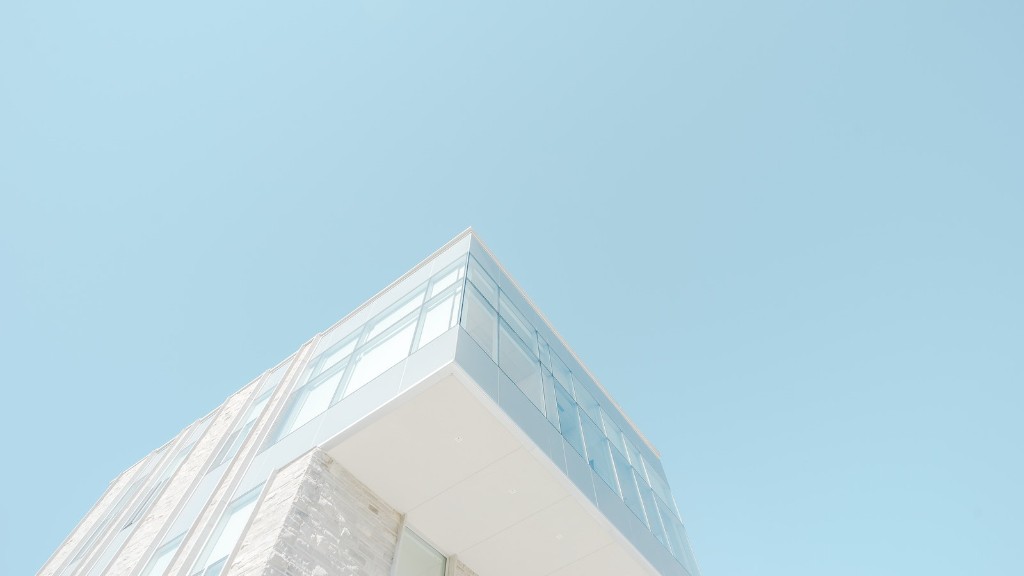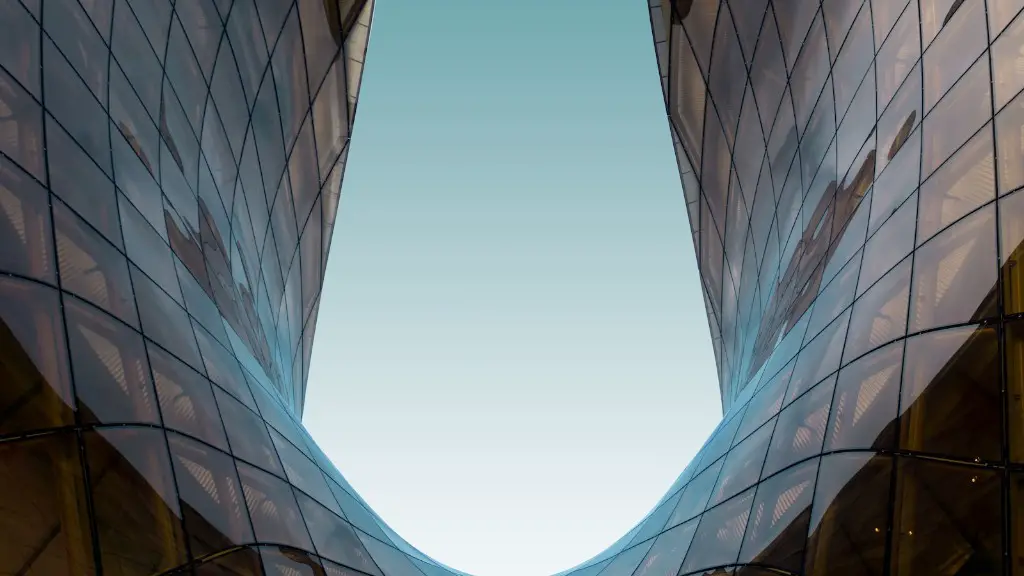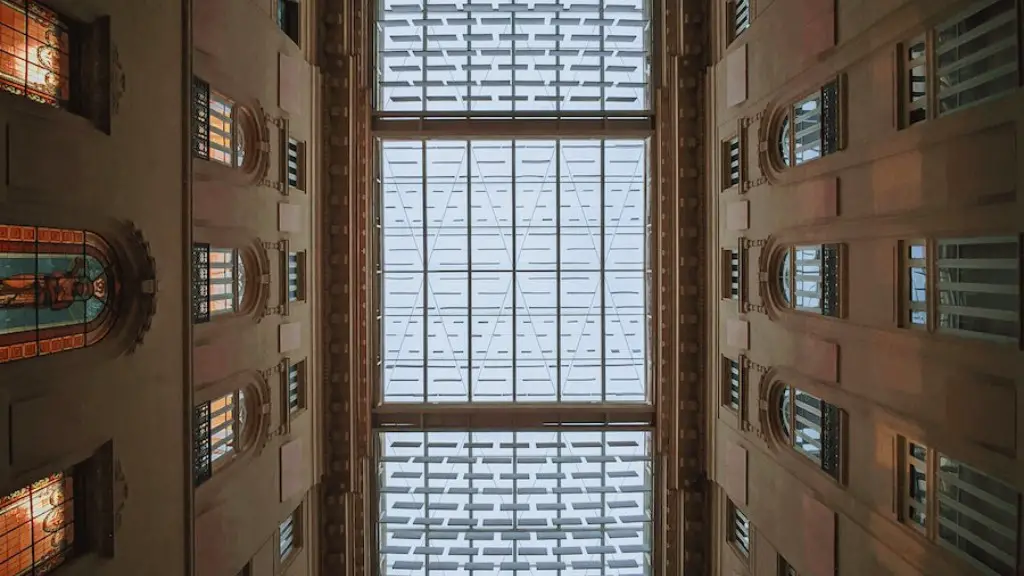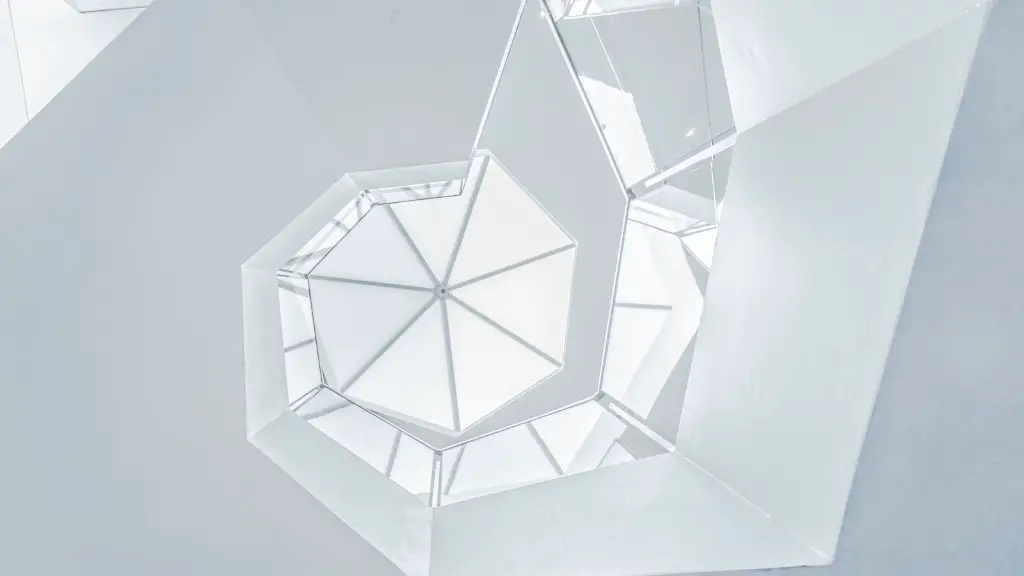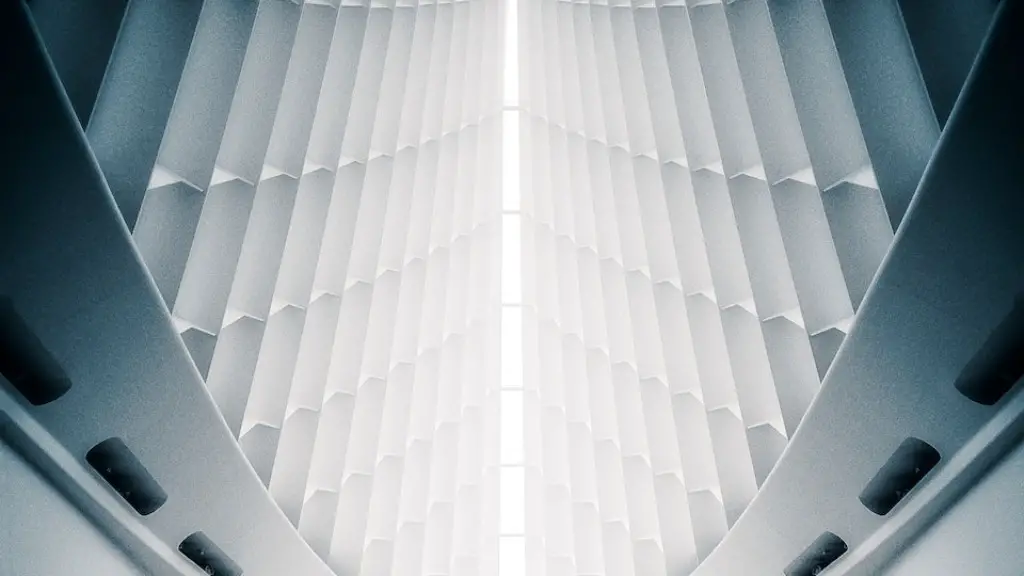Modern architecture has its roots in the 19th century, when function and form became paramount in aesthetic decisions. The Industrial Revolution rapidly transformed the way people lived, worked, and traveled, leading to the emergence of a New Architecture, that embraced the latest materials and building techniques. The dawn of the 20th century was the beginning of a new era of Modern Architecture and an unprecedented era of construction.
The early roots of Modern Architecture can be traced back to France, where it first emerged in the form of widely-regarded a form of public architecture, referred to as the Ecole des Beaux-Arts style. This architectural style was rooted in the ideals of the Enlightenment; placing emphasis on historical precedence, rationalism, and formal beauty. The style also incorporated the use of modern methods of construction for the purpose of maximizing efficiency, such as iron and steel components. While the Ecole des Beaux-Arts style was quickly adopted across Europe, its influence would come to be more pronounced in America, where the Modernist movement was present from the beginning.
The formation of the Bauhaus in Germany in 1919 further propelled the advancement of Modern Architecture by providing an outlet for its practitioners to share information and develop new techniques in architecture. The Bauhaus was founded in an effort to create a new kind of living space which would be focused not only on efficiency and comfort, but also on beauty and form. The Bauhaus was heavily influenced by the works of Walter Gropius, who became its leader in 1923, and was known for his advocacy of the functionalist philosophy. Bauhaus students were taught to think outside the box and to consider how modern construction methods and materials could be adapted to create stylish, streamlined, and affordable homes.
The International Style was a major development in Modern Architecture which was first introduced in 1920. The International Style was a response to the traditional Academic architecture which had dominated Europe before its emergence. It was characterized by its openness, its focus on the power of sunlight, and its prominence of form over function. Key figures of the International Style included Mies van der Rohe, Le Corbusier, and Walter Gropius. These figures were focused on creating buildings that were strictly minimalist in nature, with no ornamentation or embellishment. This style of architecture had a profound impact on the architecture of the mid-20th century.
In addition to the Bauhaus and International Style, the Brutalist architecture movement was also influential in the development of Modern Architecture. Brutalism was a stark, uncompromising style, characterized by the use of raw, unadorned materials and sharp, angular edges. Famous practitioners of this style included Eero Saarinen, Oscar Niemeyer, and Louis Kahn. Brutalist structures often draw inspiration from the natural environment, while rejecting the imagination of more traditional schools of architecture. This style of architecture has had a lasting influence on many cities around the world.
The influence of the different styles of Modern Architecture can be seen all over the world today, in our everyday lives. From towering skyscrapers to small buildings, they all embody the spirit of efficiency, simplicity, and beauty. Modern architectures have come a long way since its earliest days, but the same principles of functionality and form endure. Today, many people take for granted how much modern architecture shapes the way we live and move through space.
Impact of Modern Architecture
Modern architecture has had far-reaching impacts on current society and culture, both in the developed, and developing world. In the developed world, modern architecture has allowed for an increase in creative expression, allowing for people to design buildings that embody their values and contribute to the greater community.
In the developing world, modern architectures have dramatically improved the quality of life and given people access to more comfortable and energy-efficient building designs. Many health care and educational institutions have been built with modern techniques and materials, which has made them more efficient and safer. Modern architecture has also often been seen as a symbol of progress and growth, signifying our ability to combine the old with the new.
Modern architecture has had a significant impact on our environment as well. Buildings constructed using modern techniques and materials are often more energy efficient, helping to reduce energy consumption. Additionally, the use of sustainable materials such as recycled items helps to reduce the amount of waste that is produced, by making use of materials that would otherwise go to waste.
Modern architecture has also enabled us to construct buildings in previously inaccessible areas. In many parts of the world, access to housing and office buildings was limited by the availability of suitable land or the lack of necessary infrastructure. Modern building techniques and materials have allowed for construction in previously-inaccessible areas, and made it possible for those who would otherwise not be able to afford it to purchase or rent a suitable home or property.
Controversy
Despite the many benefits of modern architecture, there have also been some criticisms directed toward it. Many traditionalists have decried the increasing prevalence of modern designs, pointing to their tendency to focus more on form than on history or culture. Additionally, there have been allegations that modern architecture is not as affordable or as practical as traditional, more conventional designs.
Furthermore, some have argued that modern architecture has been responsible for a decrease in architectural beauty. Proponents of traditional design have argued that modern buildings often lack the ornamental details and subtle touches of older buildings. They argue that the sharp, straight lines and geometric shapes of modern architecture detract from the beauty and character of a space, and cite these characteristics as a major reason for the trend of urban sprawl.
Finally, modernist architects have been accused of exhibiting elitism and a lack of appreciation for regional design traditions. These critics point to the rejection of traditional forms and materials as evidence of an implicit disdain for pre-existing styles and cultures. This critique has led some to call for a re-engagement with traditional building cultures and an embrace of those materials, practices, and styles which are rooted in place.
Evolution
Modern architecture is ever-evolving, with new styles and building techniques being developed all the time. In recent years, there has been a push towards creating energy-efficient and environmentally-friendly buildings, as well as a resurgence in the use of traditional materials and styles. Additionally, there has been an emphasis on creating clean, streamlined designs which take advantage of natural light and ventilation.
The use of technology in modern architecture has also advanced greatly in recent years. Computers and other digital devices are now being widely used to simulate and manipulate building designs, helping architects to create more efficient and aesthetically pleasing structures. Additionally, many architects have begun to incorporate solar panels and other renewable energy sources into their designs, helping to reduce our reliance on fossil fuels.
Modern architecture is also increasingly being used to create structures of greater social impact. Architects are now designing buildings which have the explicit purpose of solving social and environmental issues, such as climate change and poverty. In doing so, they are providing solutions to some of our most pressing problems, while also creating beautiful and functional spaces.
Future of Modern Architecture
Modern architecture is constantly evolving and growing, as architects and designers push boundaries and explore new possibilities. Technology has made it increasingly possible for architects to create structures that not only embrace the latest materials and building techniques, but also take into account our impact on the environment and the pressing global issues that we face.
It is likely that modern architecture will continue to be influenced by traditional methods and materials, as architects seek to create structures that embody our history and culture. But modern architects will also continue to explore the possibilities of digital technology and artificial intelligence in their designs, further blurring the line between the physical and virtual worlds.
Ultimately, the future of modern architecture lies in the hands of those who create it. It is up to architects to take the lead in shaping our built environment and to create spaces that not only embrace the best of modern techniques and materials, but also embody the complexities of our human experience.
